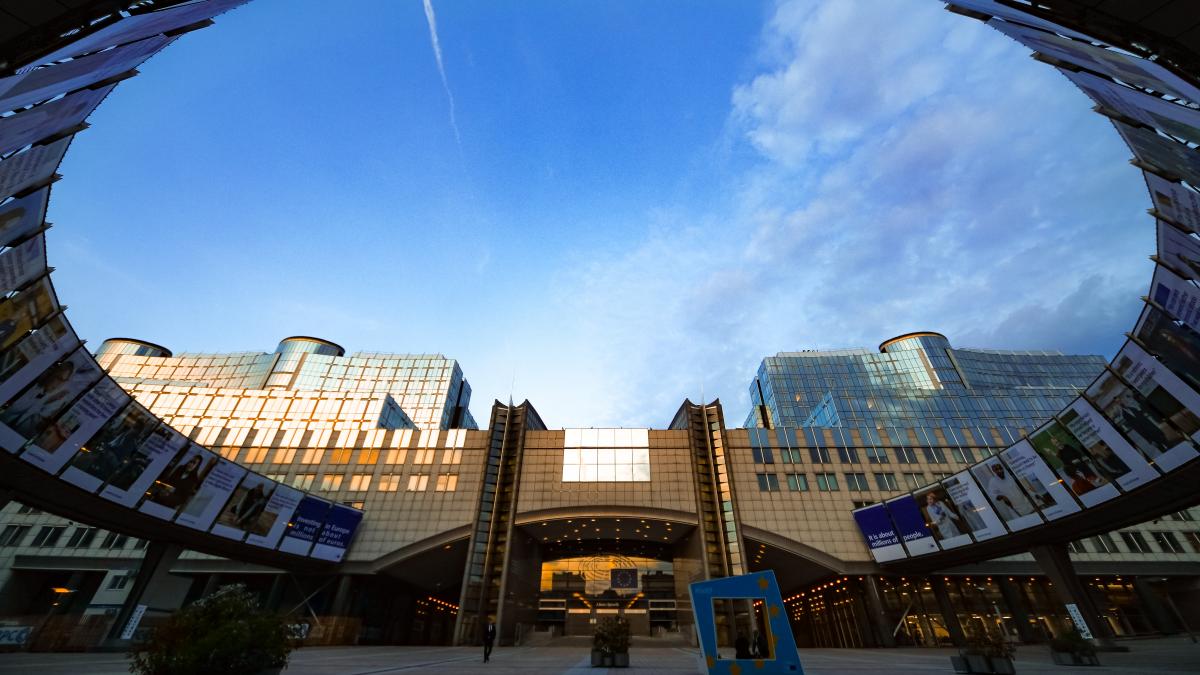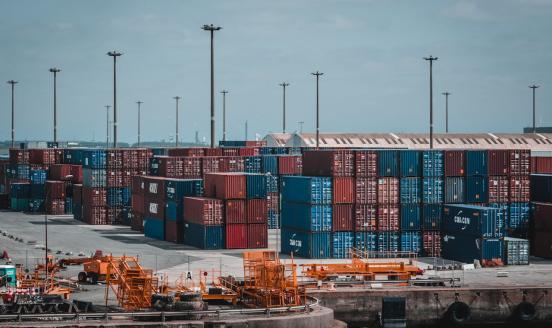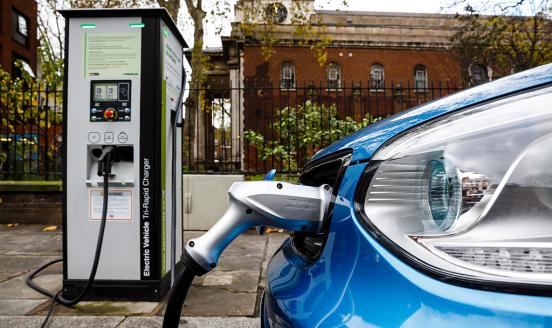Opaque and ill-defined: the problems with Europe’s IPCEI subsidy framework
Lack of strict governance and transparency creates serious risk that fair competition within the single market will be undermined.

As European industrial policy evolves, state aid is acquiring a new role in the pursuit of the European Union’s green and supply-chain sustainability goals. The Important Project of Common European Interest framework (IPCEI) – which supports major cross-border innovation and infrastructure projects – has emerged as the state aid tool of choice to support the European Commission’s industrial goals, including on semiconductors and hydrogen. However, the IPCEI governance structure is not up to the task of disciplining state aid. Uncoordinated national approaches facilitated by the framework create risks for fair competition in the EU.
Although present in European treaties since 1957, the IPCEI provision has been little used until now, but as it allows direct support to be given to companies seen as vital to European political and industrial objectives, IPCEIs are set to continue to increase in both number and size. Before 2017, only two infrastructure projects were approved as IPCEIs – the Øresund bridge between Denmark and Sweden and the Fehmarn Belt Fixed Link between Denmark and Germany. Since then, three research, development and innovation (R&D&I) IPCEIs have been approved (one on microelectronics and two on batteries). The French presidency of the Council of the EU wants to advance four more in 2022. The existing microelectronics and batteries IPCEIs will be joined by large health, hydrogen, cloud computing and semiconductor IPCEIs.
In principle, the discretion to provide large amounts of state aid to industrial projects should be accompanied by strict governance and transparency to prevent graft and negative effects on the single market. Yet IPCEI severely lacks both and even provides incentives to EU countries to compete over industrial subsidies – exactly what state aid disciplines were introduced to avoid.
Deep reform is needed: as this tool becomes more used, the EU needs to impose stricter criteria to avoid damage to the single market. A minor revision in November 2021 failed to address any of the major flaws of IPCEI.
Important Projects of Common European Interest
IPCEIs are meant to support projects that benefit the EU by making “a very important contribution to sustainable economic growth, jobs, competitiveness and resilience for industry and the economy in the Union and [by] strengthen[ing] its open strategic autonomy” (according to a 25 November 2021 European Commission press release). Projects must “overcome important market or systemic failures” or “societal challenges” that prevent the project from being carried out “in the absence of the aid”. IPCEI support is meant to bridge this funding gap for projects that the private sector alone cannot finance. In practice, an IPCEI is a project, or several integrated projects, in infrastructure or R&D&I, carried out by the private sector and supported by at least four EU countries. R&D&I projects can be either research and development, or the first industrial deployment of technologies, products and processes. The restriction to R&D&I and infrastructure is not derived directly from the European treaties, but a choice by the Commission to limit the scope and type of projects and reduce adverse effects. While IPCEIs can theoretically be EU funded, this has generally not been the case. IPCEIs are proposed, run and funded by the participating governments.
The European Commission has evaluated the framework and published an IPCEI update in November 2021. The main request of stakeholders – including firms and governments – was that participation in IPCEIs should be broadened, and more safeguards should be provided for public funds without distorting competition. The IPCEI process needed to become more transparent and the Commission needed to provide a clearer and stricter definition of criteria. As we argue below, the revision has fallen short on addressing any of the major criticisms.
Lack of broad-based participation
A major flaw of IPCEIs so far has been the lack of broad-based participation of EU countries and small and medium enterprises (SMEs). There is no public record of the process through which IPCEIs are started. IPCEIs also tend to favour bigger firms that are well connected to public authorities, and countries with more fiscal and administrative resources (as flagged by 11 EU countries in an April 2021 non-paper).
Fourteen EU countries have never taken part in an IPCEI and only four – Germany, France, Italy and Sweden – have taken part in more than two. The new rules double the minimum of countries participating to four and require that all EU countries be informed of the IPCEI and given a “genuine opportunity” to participate. The 2021 IPCEI on batteries substantially raised the number of participating countries to 12. IPCEIs to be launched in 2022 have also attracted more countries. However, even if the number of participating countries increases, participation might remain unequal as big differences in amounts of aid could persist, provided depending on fiscal capacities of the countries.
Concerns remain over how able different countries are to support companies. In industries such as semiconductors and batteries, there are reasons to suspect that IPCEI subsidies are used to incentivise the establishment of factories in specific locations. The German government offered Tesla a €1.1 billion subsidy in the IPCEI context for it to locate its European car and battery production in Germany, for example (Tesla subsequently withdrew its aid application after the German factory was built). These intra-EU subsidy races have serious corrosive potential for the single market.
Given that state aid to SMEs is less likely to distort competition, respondents to the IPCEI evaluation recommended the inclusion of more smaller players. New provisions request that SMEs be given the opportunity to participate. However, there are no minimum requirements for their participation. If SME participation is to increase, some active outreach may be required as smaller firms lack the resources to invest in public relations. At the very least, public tenders should become mandatory. Currently the Commission only states that a “transparent and non-discriminatory procedure will be considered a positive indicator”.
In practice, it is mainly large firms that have benefitted from IPCEI. In the microelectronics IPCEI, between 35%-46% of the total budget will go to just one company (STMicroelectronics). Policy objectives such as increasing manufacturing capacity of high-end semiconductors require big investments in industrial champions. This points to the tensions that need to be addressed between European goals, national projects and bias in favour of big established industrial actors.
Lack of public spending transparency
Another major flaw of IPCEIs is the lack of transparency on the decision to invest public funds and on project governance. Through IPCEIs, much larger sums than for other state aid exemptions can be awarded. Some IPCEI recipients are reported to have been earmarked to receive in excess of €1 billion. There are no absolute caps on the amounts nor on their proportion compared to the private share of investment. In theory, countries can finance projects fully. Not enough information on existing IPCEIs is currently available to enable monitoring of the efficient spending of public funds or the distortive effects on competition. While the barriers to challenge state aid decisions are very high (complainants must prove that they are individually and directly concerned), Commission approval of an IPCEI does not disqualify it from competition lawsuits and audits by the European Court of Auditors.
The only restriction on the overall amount of state aid is that it covers the ‘funding gap’ and ‘eligible costs’ of a project. At the end of 2020, the Commission’s publication of the results of an evaluation of existing state aid rules, which summarised comments from public and private stakeholders, flagged that “the provisions on the calculation of the operating and capital cost funding gaps are too complex and not sufficiently clear”. However, in its November 2021 revision of IPCEI, the Commission did not provide any additional details. Although it is the basis justifying state aid exemptions for IPCEIs, there is no clear definition of the calculation of the funding gap nor has it been published for existing IPCEIs. Without this information it is impossible to verify how funding gaps are derived, but there are reasons to doubt that they are substantial for some of the world’s most highly capitalised companies for the deployment of their core technologies, as in the case of the battery and proposed semiconductors IPCEIs.
The only binding transparency requirement for IPCEIs is the publication on a website of basic information on the aid provided (granting authority, beneficiary, amount) and of “the full text of the individual granting decision and its implementing provision”. However, of the three current R&D&I IPCEIs, only the decision on the 2017 Microelectronics IPCEI has been published by the Commission. The calculation of funding gaps is excluded from the public document. Overall, public information is scarce on how the money is spent, how the beneficiaries coordinate and on the general governance of such large long-term projects.
Looser environmental standards
IPCEIs were subject to environmental standards relating to the phasing out of environmentally-harmful subsidies and the taking into account of energy security and energy efficiency objectives, but in the 2021 update, the Commission replaced these with the sole provision that countries “must provide evidence as to whether the project complies with the principle of ‘do no significant harm’” (DNSH). However, the Commission does not commit to comply with the DNSH principle in its IPCEI decisions. Stakeholders fear this new provision risks adding administrative work to the application process – as was flagged when it was added to the Horizon Europe R&D application process. In the end, the DNSH may evolve to become an extensive operational framework, but it is not yet the case and it will not provide guidance on environmental standards for the planned IPCEIs. IPCEIs are also not subject to impact assessments.
Fundamental governance flaws necessitate a fundamental reform
Climate policy goals and strategic autonomy may justify a discretionary state aid tool like IPCEI. But it needs to be accompanied by strong safeguards. Otherwise, it runs the risks of harming the single market through weakened competition and of creating a political economy susceptible to graft by large firms in subsidy races. The IPCEI lacks constraints and is only limited by the Commission’s own assessment of what it considers a ‘market failure’ and ‘innovation’. The lack of public information and its delayed publication mean that there is little scope for the public and competitors to scrutinise projects. With large subsidies at stake, this is troubling.
IPCEIs are increasingly associated with highly visible political objectives which could put the Commission in a difficult position when deciding on the merit and applicability of individual projects, especially considering that the criteria are vague enough to elude any objective decision. While the lack of public information precludes a detailed analysis, anecdotal evidence suggests that in sectors like batteries, national governments might already face an intra-EU subsidy race.
This creates serious risk that fair competition within the single market will be undermined. A fundamental overhaul of the framework is therefore needed. Three changes are crucial.
First, if governments provide substantial public funds to a private company, extraordinary transparency is warranted. While the interest of private companies in not disclosing information is understandable, it needs to be weighed against the public interest in avoiding graft and ensuring efficient use of public funds. The current IPCEI framework is clearly unbalanced in this regard. Information on projects and decisions should be published in an accessible and timely manner.
Second, stronger EU governance is needed to avoid negative effects on the single market from large countries funding their own companies and incentivising large firms to locate production on their territory. Decisions on IPCEI financing should include some involvement of third parties in the decision making – the European Parliament, public debates and stakeholder consultations. IPCEIs need to become real ‘Common European Projects’.
Third, strict definitions of the criteria for granting state aid under IPCEI are necessary. The loose definitions that can be redefined by the European Commission could lead to a further watering down of state-aid disciplines in the name of strategic autonomy. This may have already started. In the context of the European Chips Act, Commissioner Vestager already proposed providing support to ‘European first-of-a-kind’ projects, meaning projects that are not innovative themselves but haven’t been applied in the EU yet.
Recommended citation:
Poitiers, N. and P. Weil (2022) ‘Opaque and ill-defined: the problems with Europe’s IPCEI subsidy framework’, Bruegel Blog, 26 January



